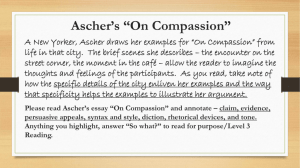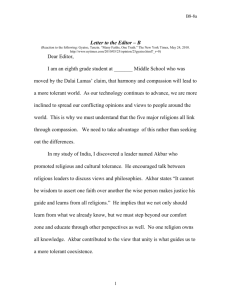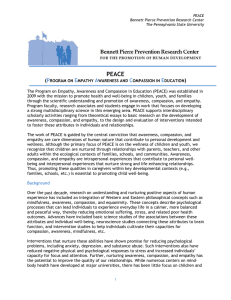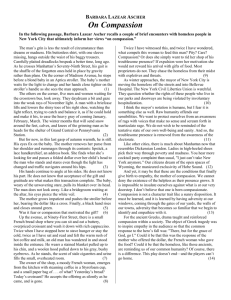Kerith Edwards -- Using Defining As Critical Thinking
advertisement
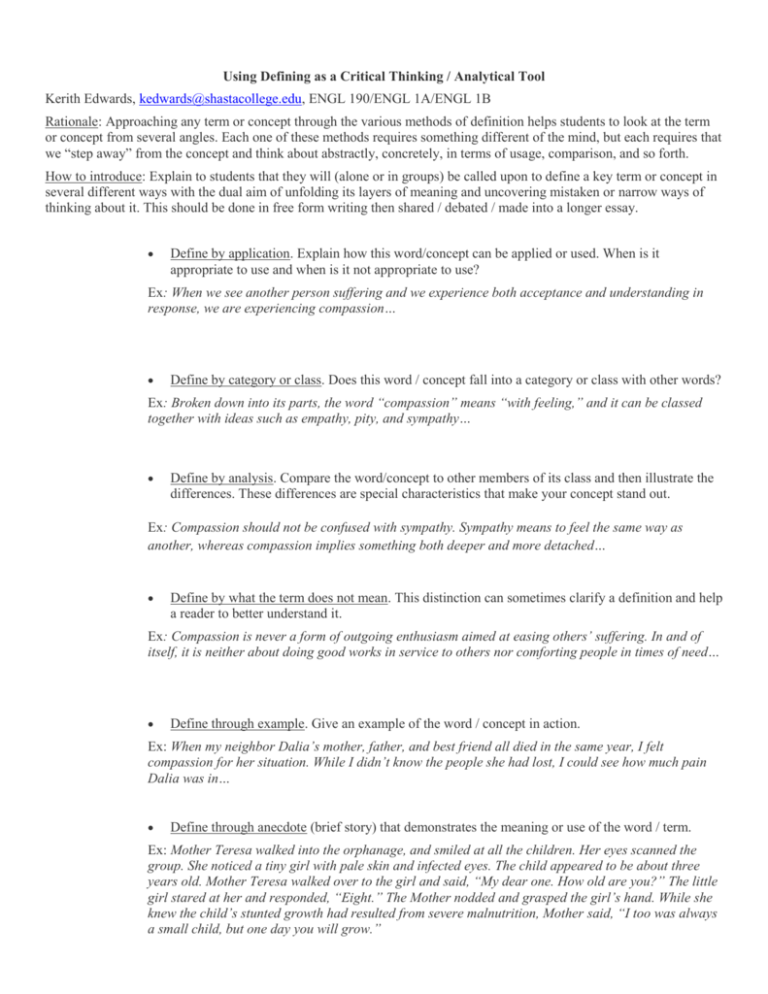
Using Defining as a Critical Thinking / Analytical Tool Kerith Edwards, kedwards@shastacollege.edu, ENGL 190/ENGL 1A/ENGL 1B Rationale: Approaching any term or concept through the various methods of definition helps students to look at the term or concept from several angles. Each one of these methods requires something different of the mind, but each requires that we “step away” from the concept and think about abstractly, concretely, in terms of usage, comparison, and so forth. How to introduce: Explain to students that they will (alone or in groups) be called upon to define a key term or concept in several different ways with the dual aim of unfolding its layers of meaning and uncovering mistaken or narrow ways of thinking about it. This should be done in free form writing then shared / debated / made into a longer essay. Define by application. Explain how this word/concept can be applied or used. When is it appropriate to use and when is it not appropriate to use? Ex: When we see another person suffering and we experience both acceptance and understanding in response, we are experiencing compassion… Define by category or class. Does this word / concept fall into a category or class with other words? Ex: Broken down into its parts, the word “compassion” means “with feeling,” and it can be classed together with ideas such as empathy, pity, and sympathy… Define by analysis. Compare the word/concept to other members of its class and then illustrate the differences. These differences are special characteristics that make your concept stand out. Ex: Compassion should not be confused with sympathy. Sympathy means to feel the same way as another, whereas compassion implies something both deeper and more detached… Define by what the term does not mean. This distinction can sometimes clarify a definition and help a reader to better understand it. Ex: Compassion is never a form of outgoing enthusiasm aimed at easing others’ suffering. In and of itself, it is neither about doing good works in service to others nor comforting people in times of need… Define through example. Give an example of the word / concept in action. Ex: When my neighbor Dalia’s mother, father, and best friend all died in the same year, I felt compassion for her situation. While I didn’t know the people she had lost, I could see how much pain Dalia was in… Define through anecdote (brief story) that demonstrates the meaning or use of the word / term. Ex: Mother Teresa walked into the orphanage, and smiled at all the children. Her eyes scanned the group. She noticed a tiny girl with pale skin and infected eyes. The child appeared to be about three years old. Mother Teresa walked over to the girl and said, “My dear one. How old are you?” The little girl stared at her and responded, “Eight.” The Mother nodded and grasped the girl’s hand. While she knew the child’s stunted growth had resulted from severe malnutrition, Mother said, “I too was always a small child, but one day you will grow.”



